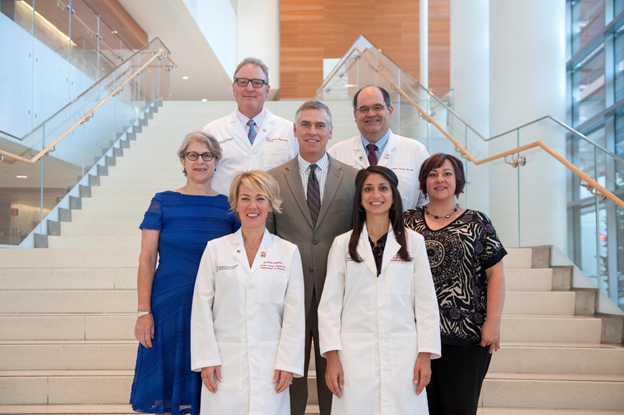Trisha Jordan, Pharm.D., M.S.; Melissa Snider, Pharm.D. BCACP; Andrew Thomas, M.D., M.B.A.; Harrison Weed, M.D., M.S., FACP; Kent Hess M.H.A., FACHE; OSUWMC Credentialing Department; Robert Weber, Pharm.D., M.S., FASHP
The Ohio State University Wexner Medical Center, Columbus, Ohio
In lieu of national provider status, pharmacists are leveraging state law to support an expanded scope of practice to meet growing patient care needs. In the State of Ohio, collaborative practice through a formalized consult agreement allows for an expanded scope with additional institutional requirements to establish the appropriate credentialing and/or privileging procedures prior to acting under the agreement. In 2012, our health-system launched an initiative to elevate the scope of practice for all direct patient care pharmacists to that of mid-level providers to accomplish an organizational desire for all pharmacists to practice at the top of their licenses, to respond to increasing pressure to improve the efficiency of both medical and pharmacy staff, and to expand practice model and billing options for ambulatory pharmacy services being provided.
All pharmacists with direct patient care responsibilities were required to become credentialed with clinical privileges. This process required ongoing collaboration between pharmacist and prescriber, with the ultimate goal of enabling proactive medication management. Select members from both ambulatory and acute care pharmacist staff participated in the development of core and optional privileges. Core privileges were developed to encompass a practice expansion that would apply to the majority of pharmacists in either ambulatory or acute care settings. Optional privileges were designed to require higher cognitive skills and were limited to those who have the clinical training and expertise. Pharmacists’ clinical privileges are determined by practice area, collaborating physician support, organizational competency, and pharmacy leadership approval. The medical staff is involved in the development, support, and final approval for each request for additional privileges.
Pharmacist privileging has led to several benefits including formalizing a professional practice evaluation process within the department and improving the efficiency of our pharmacists and providers. One example is standardizing documentation of privileged activities and actions. Another example is eliminating administrative tasks for both pharmacists and providers. Pharmacists’ scope of practice is now standardized and providers are no longer confused by what pharmacists can or cannot do. Assuming responsibility for patient care related activities also improved efficiency. For example, the Emergency Medicine (EM) pharmacists now independently assess culture results and antibiotic selection for EM patients discharged from the emergency department.
Clinical privileging has been successfully implemented at our institution and has allowed for an expansion in scope of practice, improvement in efficiency of providers and pharmacists, and an increase in ambulatory billing options. To date, over 80 pharmacists have been granted clinical privileges. This practice model can be translated to any health-system across the country. As a profession we can continue to convey the value of pharmacists in improving patient care. Full-scale implementation of clinical privileging has created a robust and innovative practice model that can serve as a model for other institutions.

